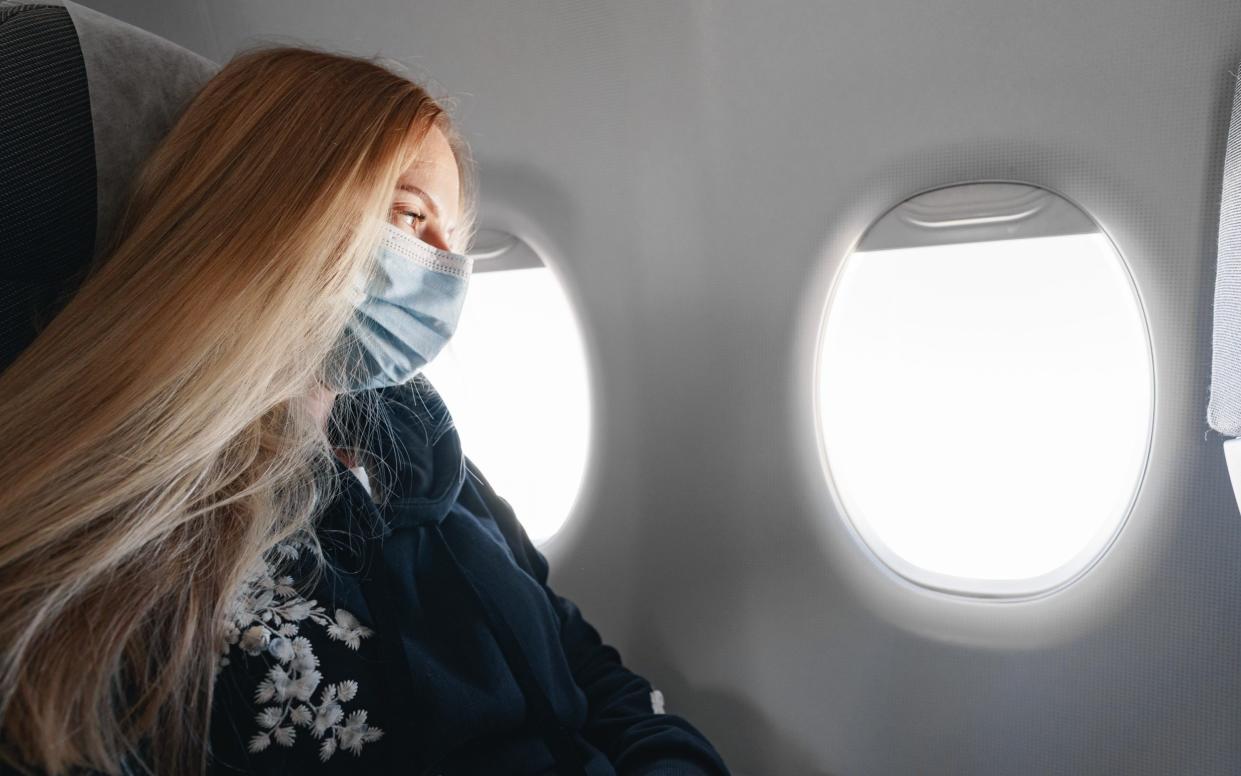We now have two irreconcilable classes of traveller: the gung-ho and the Covid cautious

This week’s removal of testing requirements for fully vaccinated travellers returning to the UK is surely, for most of us, excellent news. But there is an interesting contrast in attitude among Telegraph readers when it comes to the easing of some other restrictions.
Last week I mentioned in passing that some – who hate wearing masks and don’t want to continue to do so – have been asking us about when they will be able to fly without them and which destinations they might be able to visit where there are no rules requiring masks to be worn.
But then there are plenty more who do not welcome the removal of restrictions, who have reported back from flights where, for example, passengers were not wearing masks properly or were nursing drinks for long periods of time to avoid having to wear them. These readers worry about an increased chance of catching Covid and also about then having to self-isolate while they are on holiday.
It’s pretty much impossible to reconcile these two positions. Appetite for risk has always varied among travellers. Those differences have been heightened and polarised by the pandemic and it will probably take months before many anxieties are quelled. Probably for most, if not all of 2022, the two types of travellers – those who want the fastest possible return to normality and those who take a more cautious approach – will have to find their own different ways of adapting.
On the question of masks, even though the Government has today eased general restrictions in England, including on mask-wearing, there are some exceptions. They remain compulsory on Transport for London services, for example. They also continue as a requirement on UK airlines and it’s not possible to say when they might change their rules. In any case, the policy is determined by the destination as well as the departure country – they are compulsory on all flights in and out of the US, for example.
On the more general question about destinations where masks are currently not legally required, the answer is not many. Such countries include Sweden, Greenland, Ethiopia and – from next week – Denmark. (Others are Belarus, Turkmenistan, Syria, Yemen and Somalia, but you are likely to face other dangers there). The list will certainly grow, but probably only slowly.
Overall, I’m in the more fatalistic camp. I think the risks from Covid have diminished hugely with vaccination and the emergence of omicron. But I’m not a believer in throwing caution to the wind entirely and, personally, I can live with wearing a mask for the time being. I know there are arguments around how much protection it actually gives, but if it makes others feel more comfortable then, as we readjust to some kind of normality again, I can live with it.
If you are in the cautious camp, however, and are nervous about the lifting of restrictions or you are worried about flying, here are three suggestions for travelling in the next few months.
Fly off-peak
Travelling off peak – on a mid-day, mid-week departure, for example – will maximise the chances of being on a less crowded flight. Overall the cost of the fare is likely to be the best guide to how many people will be on board, especially if you book within two or three weeks of departure. The less you pay, the greater the chance of plenty of empty seats. Limiting the distance you fly might also be reassuring, minimising the amount of time you spend on board. Flights to northern Italy, for example, generally take less than a couple of hours.
Consider a self-drive trip
If it is flying which worries you most then and trains don’t appeal much either, then the obvious solution is to travel in your own car. On Eurotunnel you can even stay in your vehicle for the whole crossing (though you can’t stay on the car deck on a ferry).
Book self-catering
A villa, apartment or a cottage gives you more space and probably exposes you to fewer people than staying in a hotel.


